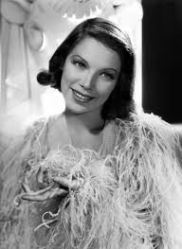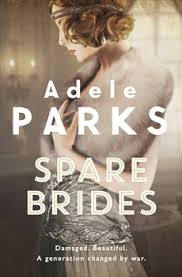The Mitford Society had the pleasure of reviewing Helen Peppe’s memoir Pigs Can’t Swim. (Click here to read the review) Even though she’s very busy promoting her book, I managed to catch up with Helen for a chat about Pigs Can’t Swim and even more surprisingly, given her hectic schedule, she replied with very detailed answers. Coming from a large family I’m sure Helen could see why we Mitty fans were keen to get her perspective on Life’s Great Unfairness…

For those who are yet to read Pigs Can’t Swim can you tell us what inspired you to write this memoir?
I was writing a different memoir (Naked, Finding My Feet), one about losing weight and food issues, when Debra Marquart, author of Growing Up in a Horizontal World, suggested I write a few personal essays to explore the source of my food issues: childhood. I wrote what is now “The Killing House” chapter, and then I remembered about Waterboro and wrote the “Pigs Can’t Swim” chapter. I sent the personal essays to Debra, we discussed them, and then I couldn’t force my mind back to my original memoir. I kept writing one chapter after another until I had 300 pages. I wrote them all in six months. Once I got the memories on paper, I then went back and shaped everything and removed details and stories about some of siblings and mother that would have hurt them and/or their children to know. For these ethical reasons, I whittled the book down to about 200 pages. When Da Capo bought PIGS, they wanted more of my younger years included, so I added several chapters: the exploding pressure cooker and the puppy who bit me. What’s interesting about PIGS is that my father claims he can remember nothing, including the puppy biting me. I have a deep scar on my eye and nose, and he was embarrassed when I showed him the scar. One of my mentors commented, “Seems like a parent should remember his daughter getting hurt so that she needed stitches and none were given.” He claims not to remember the molestation either. Forgetfulness is a common coping tool.
I never intended to publish PIGS. It was more prewriting for my weight loss memoir, but the book became my MFA thesis, and then my husband (yup, the same Eric) and my sister who-holds-grudges-longer-than-God encouraged me to get an agent. So, I did, but before anything became public, I took out even more scenes that might hurt my parents or my siblings, and I changed identifying characteristics. I hope PIGS helps people to see the chaos of their own childhoods with less judgement and more humor. Very few people have delightful beginnings. Growing up is HARD.
If anyone reads PIGS and is disturbed by the animal slaughter and abuse, then maybe they will consider not eating so many of them. That will be a positive outcome for animals everywhere.
What creative process did you undertake i.e. how easily could you draw on your childhood memories and how long did it take you to compile the story?
Because I have many life-long issues due to my childhood, especially food and sex, many of those memories are always right there in my brain armed to defeat my resolve to banish them. Our brains like to hold on to traumatic events and flash vivid images into our minds’ eyes when triggered by touch and smell etc. To assist these, I found old pictures, I went back to where I grew up (ugh), and I talked to my sister who-holds-grudges-longer- than-God. Her grudge holding power means she is also a holder of an amazing amount of detail. And the book took about 6 months to write the first draft.
In the style of Nancy Mitford’s postwar novels The Pursuit of Love and Love in a Cold Climate, did you ever consider writing Pigs Can’t Swim as a fictional book loosely inspired by your real life?
I did consider fiction. Just as Alexandra Fuller and Sue Williams Silverman considered it. However, fiction didn’t work for any of us. The stories lost power because they gained psychologic distance. At the end, before it was published, I asked Eric, my publisher and others if now that I’d written this as truthfully as I could, could we market it as fiction, and they all agreed it wouldn’t sell as well. I also considered a nom de plume, but was shot down.
Did you originally intend to conceal the identities of your many siblings? And on that note what has their reaction been like?
Yes, always. I wanted to conceal the identity of everyone. I even tried to conceal the location, and I purposely left off the last names of the dead people in the cemetery.
I used the descriptive names based on how my parents sometimes referred to the kids. My hope was that everyone might have a sister of poor choices etc and then the siblings could become anyone’s siblings, sort of like an everyman story.
Jessica Mitford remarked that growing up in a large family makes one accustomed to Life’s Great Unfairness. Would you be inclined agree? And what did it teach you?
YES! Everything ALWAYS was unfair. And the unfairness bit at me all the time so that I constantly thought things like, “When I get out of here I am not going to have a husband because I don’t want anyone ever telling me what to do again!” Or, “When I have money, I am going to eat all the chocolate I want.” As you know I failed on the first resolve, but the second one is a success.
For the aspiring writers in The Mitford Society can you describe your publishing journey? Was it easy getting an agent and at any point did you feel like giving up?
Actually, getting the agent wasn’t difficult. I got lucky. My MFA program has agents come in and speak during the last residency, and the agent who spoke at mine loved one of the chapters I’d given her. It was “Bus Number Two.” The part after that took a year, however, because Hurricane Sandy arrived in New York and slowed publishing houses down. Each house took a long time to read. But I never felt like giving up. I am not a giving up type of person, which is why I annoyed my family so much. Just as I tried to convey in PIGS, I really can be a pest and a nag.
Will you write a follow up to Pigs Can’t Swim?
Yes, I am working on it now. Originally, I had a different project in mind, but so many people want to know how I got out and how my childhood affected me that I’ve decided to do an honest-to-goodness sequel.

Helen Peppe
Helen Peppe is a professional writer and photographer (primarily equine). The former editor of Eastern Equerry and Wordplay Magazine, her short stories, articles, and photographs have appeared in a myriad of anthologies, books, and magazines, including Practical Horseman, Equus, American Trakehner, Arabian Horse Times, Dog Fancy, Dog World, Dressage Today, Equine Journal, The Horse, Lynx Eye, Mused Literary Review, Cats Magazine, and The Good Men Project. Several of her short stories and photographs appear in text books and educational media. She is the author of the limited edition Live on Stage: A History of the State Theater and creator of the Maine Stable Guide, published annually 1995-2005.
Click here to visit Helen Peppe’s official website















